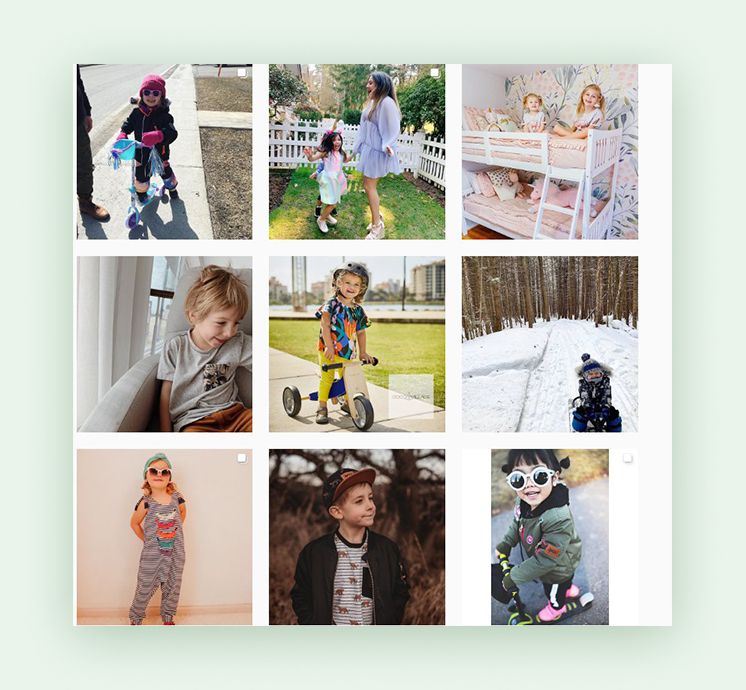Create high quality UGC - Try Showcase for free
Deux par Deux, like most fashion retailers, releases collections two times a year.
During those collection launches, things are messy and tend to go fast - the marketing department is juggling with multiple deadlines, and the operations team is catching breaking plates.
The goal for any retailer during that period is to start selling their inventory as fast as possible.
As the season moves along, they lose hefty profit margins to discounts and clearance sales.
In other words, at the beginning of the season, people are paying more in the name of timing.
Deux par Deux wanted to include micro-influencer marketing into their marketing mix to:
- Generate sales through their network of micro-influencers
- Create content to use across their different marketing channels (Instagram and Facebook ads, email, social media calendar, etc.)
In this article, I will cover how they did so using inBeat.
TL;DR
- Deux par Deux, a fashion retailer, faced challenges during collection launches, aiming to sell inventory quickly.
- They incorporated micro-influencer marketing to boost sales and create content.
- Defining the plan included targeting 50-60 collaborations and 100+ creative assets, contacting 400-500 micro-influencers, and selecting the right personas.
- Micro-influencers were chosen for cost-effectiveness, generating sales, and more content assets.
- They used inBeat, an influencer discovery tool, to find suitable influencers based on criteria like followers, engagement, location, and email availability.
- Outreach was managed through Mailshake, and a pitch sequence resulted in 70 collaborators.
- Onboarding influencers included capturing necessary information via a Google Form and providing guidelines for content creation.
- A Google Sheets-based influencer CRM tracked promo codes, sales, post URLs, and influencer details.
- The results included adding 5 new clients per micro-influencer, significant lifetime value, and 150+ original content pieces for marketing.
1 - Defining the Right Plan
How Many Influencers do They Want?
Deux par Deux wanted 50-60 collaborations and 100+ unique creative assets.
They can expect to close 10% to 15% of the influencers we contact. This means that we need to pitch anywhere from 400 to 500 micro-influencers.
In the case where more influencers agree to work with their brand, they will have the leverage to choose their influencers.
Who’s the Right Influencer
Deux par Deux decided to work with micro-influencers for multiple reasons:
- They wanted each collaboration to cost 150$ in-store credits on average, with each payout between 100$ and 200$. In exchange, they require 1 or 2 posts and 1 story, depending on the negotiation.
- They wanted more content assets to reuse across our marketing.
- Micro-influencers generate more sales at a lower cost per sale (based on past campaigns we have done).
In Deux par Deux’s case, finding the right influencer persona is straight forward:
- Mother or/and children
- In North America
- With 10 000 to 25 000 followers
- Engagement rate > 3%
2 - Finding Influencers
Deux par Deux found influencers by using our tool, inBeat, an influencer discovery tool. The number of potential collaborators they needed to contact was too high to do it by hand (if you want to see how you can find influencers by hand, I recommend this article).
They filtered their search:
- 5k to 25k followers
- Acceptable engagement rate
- Located in the USA or Canada
- Has email
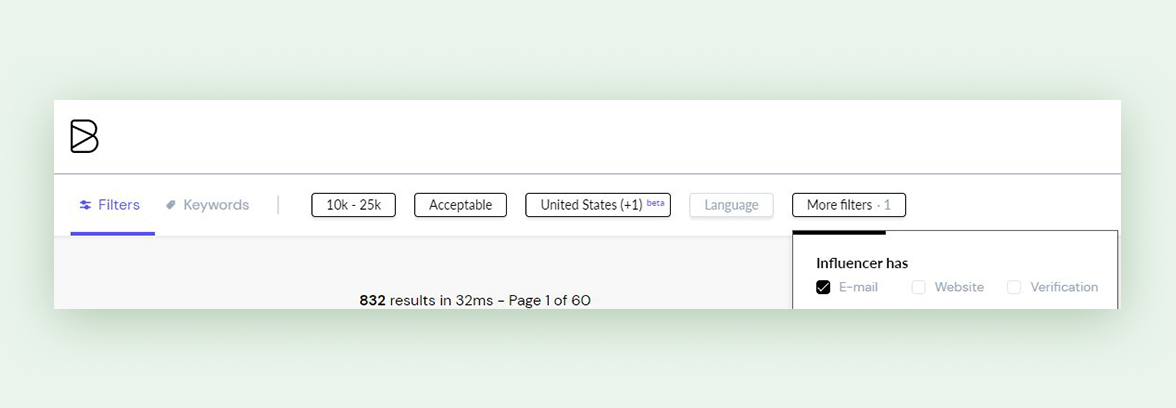
They needed each influencer to have an email because they wanted to contact them in bulk through Mailshake, a cold emailing tool.
They used three search terms: (1) mother,(2) mom, and (3) newborn, independently. The reason they ran a search with the keyword newborn is that they wanted roughly 10 influencers with a newborn child to promote their baby collection.
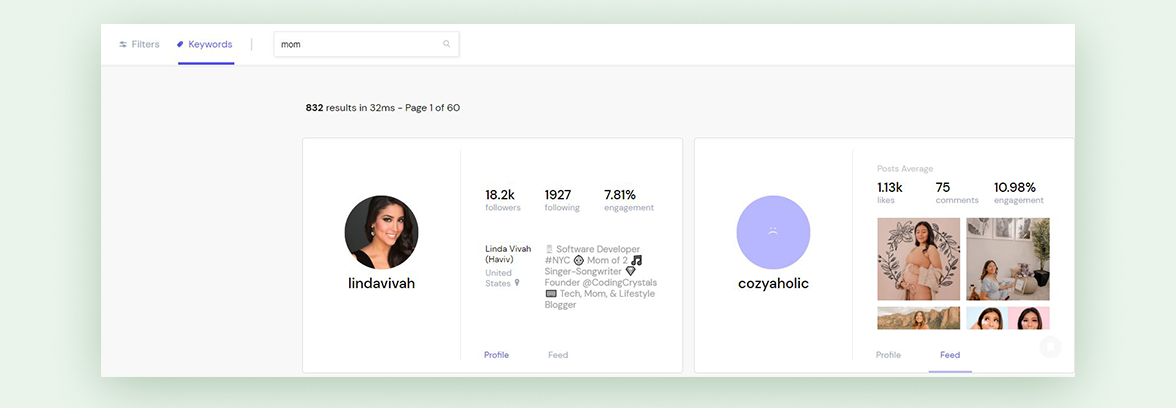
3 - Pitching the Influencers
Once they finished selecting the influencers for their campaign, they exported their campaign to a CSV format, which they imported to Mailshake:
They then wrote their pitch and follow-up sequences (3 follow-ups), and they kicked-off the campaign.
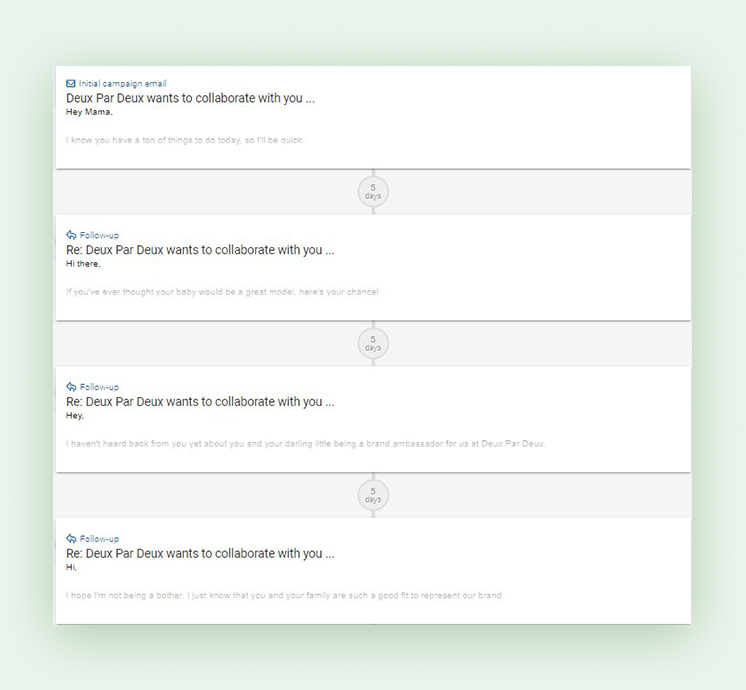
With this sequence, they got 70 collaborators:

At this point, Deux par Deux negotiated with 90 influencers, 20 declined, and 70 accepted, from which they chose 60.
4 - Managing Influencers
Once Deux par Deux chose their influencers, they need to onboard their new ambassadors. This means getting and sharing the right information.
They used a simple Google Form to capture all of the information they needed from the influencer (email, address, name of their children, etc.) will be more than enough.
They then setup an autoresponder that triggered when the form was filled out. This message gave the influencer all of the relevant guidelines:
- Content format
- Product Positoning
- How to prepare the image (adding #sponsored to the hashtag, tagging Deux par Deux’s Instagram page in the image, etc.)
They then integrated the form to Google Sheets to create their lightweight influencer CRM.
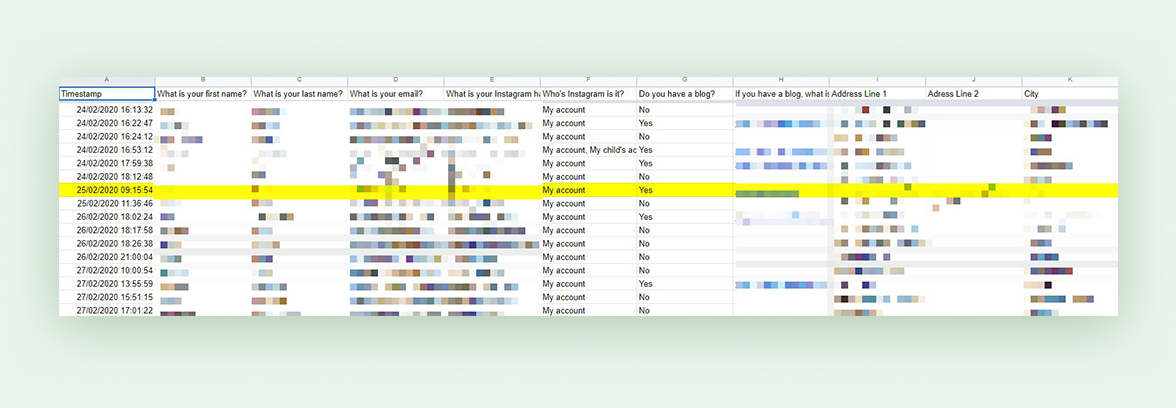
They used this sheet to track:
- Promo codes
- Sales
- Post URLs
- Influencer related information (address, handle, kid’s name, etc.)
The Results
- Deux par Deux adds 5 new clients per micro-influencer, on average. Given their vertical, the lifetime value of a client is significant.
- Deux par Deux received 150+ pieces of original content in many formats (videos, stories, and images), which they can add to their marketing mix
